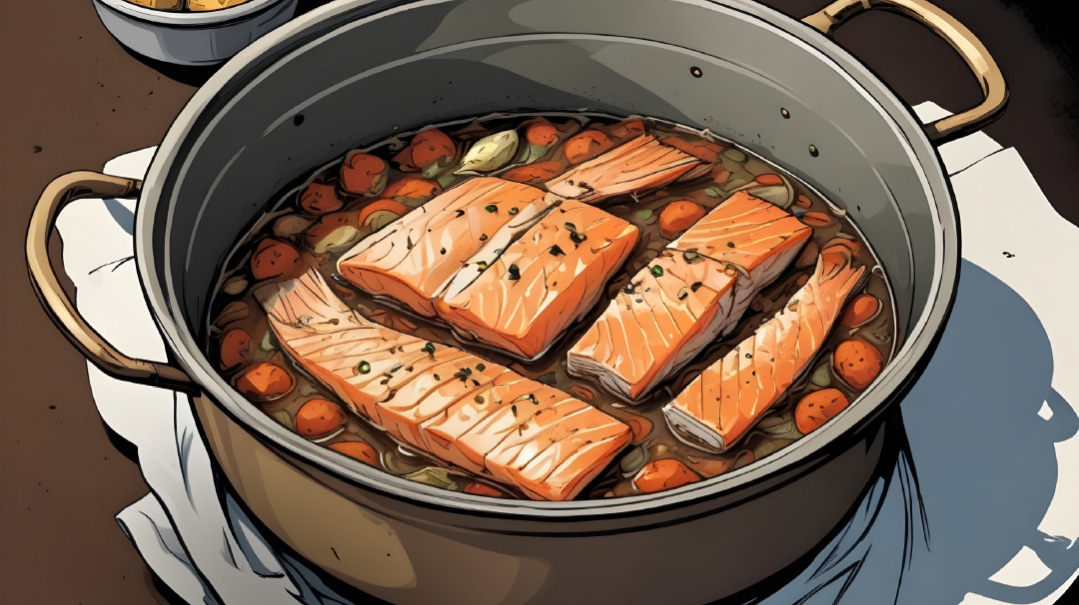Take Your Pick

A stir-fry, for crying out loud. In recipe-developer-land, did no one let slip that a stir-fry is a combination food?

Dear nutritionist, you lied to me.
You said if I’d introduce a new food enough times, my children would learn to love it. Or at least tolerate it. Or at least not ask to go sit in a different room on the other side of the house when I serve it.
But it was a bald-faced lie.
Not only have my kids not made their peace with cabbage or peas, they're methodically and slowly eliminating other formerly safe foods from their diets.
First, they came for sweet potatoes, and I didn’t speak out, because I’m not a sweet potato. Then fish sticks were proscribed. Fish sticks! What will be with my cheat suppers? Then chicken on the bone became a food non grata. What will be next to fall?
Dear recipe columnist, you lied to me too. Is there no one I can trust?
You offered a simple weeknight-dinner recipe set that would, and I say this with ironic air quotes, “please the pickiest palate.” Jackpot, I thought!
But no. My hopes were dashed yet again, because the first recipe was a stir-fry. A stir-fry, for crying out loud. In recipe-developer-land, did no one let slip that a stir-fry is a combination food?
Did you think a combination food — one that has onions and peppers in it, no less — would please the palate of the child who won’t eat a peanut butter sandwich if the knife that spread the peanut butter was also used for jelly sometime that morning? (Yes, I understand that technically bread on peanut butter is also a combination food. I guess that’s why he considers himself to have a wide and eclectic range of tastes.)
Another recipe claimed to be perfect for picky eaters, since the green beans in the stew softened to a barely recognizable mush. As if vague and nebulous enemies are any less terrifying than clearly defined antagonists. Ask any parent of a picky eater — bits that you can identify and scoop out to brandish on an accusing spoon are far less threatening than sneaky, might-accidentally-get-swallowed fugitives.
Back in Tishrei, while clearing away the detritus of almost as many Yom Tov meals as I have fingers and toes to count them, I had an epiphany. I’d hung my menu on the fridge in a vain attempt to marshal some form of order in my overloaded fridge, with one entire shelf devoted to hadassim. As I took the menu down on Motzaei Yom Tov, I realized that with the possible exception of chicken soup, there was not one food on the menu that had been eaten by more than one child.
It was like one of those old logic puzzles: Moishy eats only foods that are whitish brown. Aliza ate three bites less than the child who won’t touch fish. Dovi is two years older than the child who likes carrots, but not if they appear at the same meal as potatoes, or on any day that ends in Y.
When you’ve filled out the entire grid, the answer should emerge: Why is there more food being returned to the kitchen than was originally served?
The foregoing exercise was actually just a mental warm-up for the next paradox: If Dovi doesn’t eat the potato kugel his mother makes, or either of his two grandmothers’, or the kugel in the school lunch program or any takeout kugel we’ve ever had, can he still claim to like potato kugel? Or is the claim unfalsifiable and therefore null?
My two-year-old, thankfully, is still untouched by the culture of food rejection around her. If it’s on Mommy or Totty’s plate, it has instant appeal. I know that her days are numbered, though.
At an age when her oldest brother had only just learned the word “wobbibop,” and his naive mother couldn’t figure out what he was plaintively requesting, Yehudis already has an impressive lexicon of different candy names and brands, and a two-year-old’s resourcefulness in procuring them.
When I was the proud mother of one 18-month-old, my more experienced older sister thought it was hilarious that I moved his booster seat to a different room so I could feed him grapes for Shabbos party while his older cousins ate Sour Sticks. “Don’t think that will last,” she warned me, but of course I knew better.
So today I’m here in a public forum to say, Sara, you were right. It didn’t last.
I am ready to cut a deal — a general amnesty. Nutritionists, recipe developers, sisters-in-law whose kids think kale chips are a treat: I will forgive your earnest but false assurances that my kids can learn to eat if I just have the right attitude.
Neighbors, friends, sisters-in-law whose kids regularly eat noodle soups for supper on random Tuesday nights and bring hot sauce potato chips to school for lunch: Please forgive me for any judgment, no matter how unconscious or private, I may have cast on your parenting.
Are your kids reasonably content? None suffering from malnutrition? Mom, you’re doing great.
(Originally featured in Family First, Issue 783)
Oops! We could not locate your form.






